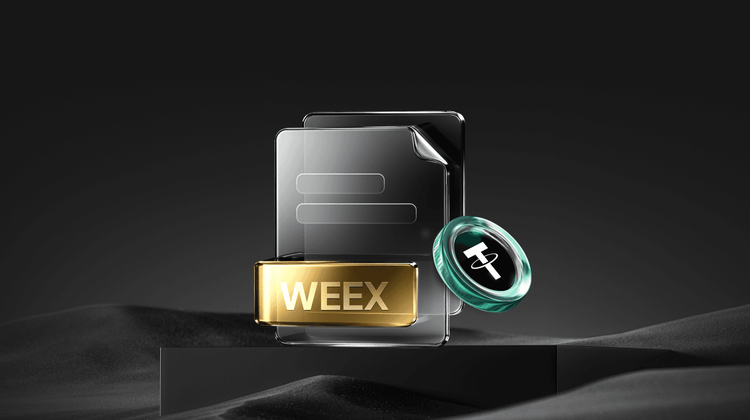Archetyp Dark Web Market Shut Down: How the Underground Ecosystem Quickly Adapts in 2025
Latest Updates on Dark Web Market Disruptions as of August 28, 2025
Imagine a shadowy online world where illegal trades happen in the blink of an eye, powered by cryptocurrencies that promise anonymity. That’s the dark web, and one of its major players, the Archetyp market, just got taken offline by authorities. But here’s the twist: these underground networks don’t stay down for long. They bounce back faster than you might think, adapting like a virus to new pressures. As we dive into this story, you’ll see how law enforcement’s wins are impressive, yet the ecosystem’s resilience keeps the game going.
Published on August 28, 2025, this breakdown draws from the latest reports, including fresh insights from blockchain experts. With dark web activities evolving rapidly, recent data shows transaction volumes in these markets surging despite crackdowns, hitting new highs in 2025 with over $1.2 billion in illicit crypto flows tracked globally, up from previous years.
Europol’s Major Strike Against Archetyp Dark Web Market
Picture a five-year operation that built a massive user base, quietly facilitating deals worth hundreds of millions. That’s Archetyp, a notorious dark web market that Europol finally dismantled through coordinated international raids. On Monday, authorities announced they had targeted the site’s core infrastructure in the Netherlands, involving teams from six countries. They arrested the alleged German administrator in Spain, along with a moderator and six top vendors in Germany and Sweden.
This wasn’t a quick win—it took years of piecing together clues, like following cryptic financial trails through cryptocurrencies. Archetyp relied heavily on Monero, that privacy coin designed to keep transactions under wraps, making it a go-to for dark web trades. The market boasted more than 600,000 users, racked up at least $287 million in transactions, and featured over 17,000 listings, mostly drugs like cocaine, MDMA, and amphetamines. It even allowed sales of dangerous substances like fentanyl and synthetic opioids, setting it apart in this risky space.
Europol compared Archetyp to legendary shutdowns like Silk Road and Dream Market, those infamous hubs that once dominated online drug trafficking. Its scale and staying power made it a big fish in the criminal pond, but relentless investigative work, including tracing those elusive crypto flows, finally brought it down.
Dark Web Ecosystem’s Remarkable Adaptability Amid Shutdowns
Even as platforms like Archetyp crumble, the broader dark web ecosystem proves incredibly resilient. Think of it like whack-a-mole: knock one down, and another pops up, often smarter and harder to hit. Blockchain intelligence from firms like TRM Labs highlights this in their latest 2025 report, noting that while law enforcement scores victories, illicit vendors swiftly migrate to apps like Telegram and Signal for peer-to-peer deals.
These alternatives promise quicker transactions, lower fees, and less chance of a full shutdown, making life tougher for enforcers. Take the 2022 Hydra market takedown— a new Russian replacement emerged almost overnight. TRM Labs points out that rebuilds are getting rarer; instead, operators opt for quick rebrands or exit scams, using tactics like anonymous domain registrations and laundering funds through high-risk crypto exchanges to stay ahead.
Recent Twitter buzz echoes this adaptability. Users and experts are discussing how dark web markets are “evolving faster than cops can keep up,” with threads from cybersecurity accounts sharing stats on rising Monero usage, up 25% in illicit transactions this year alone. Google’s top searches related to this? Questions like “What happens after a dark web market shutdown?” and “How do dark web vendors avoid detection?” dominate, reflecting public curiosity about these hidden economies.
Latest updates as of August 28, 2025, include official announcements from Europol confirming no immediate successors to Archetyp have dominated yet, but monitoring shows fragmented networks gaining traction. Twitter posts from blockchain analysts warn of increased activity on encrypted messaging platforms, with one viral thread noting a 15% spike in dark web-related crypto volumes post-shutdown.
Why Brand Alignment Matters in Crypto’s Fight Against Illicit Use
In this cat-and-mouse game between dark web operators and authorities, brand alignment plays a crucial role for legitimate players in the crypto space. Exchanges that prioritize compliance and transparency not only build trust but also help distance the industry from these shady dealings. It’s like choosing a reliable partner in a stormy sea—aligning with brands that emphasize security and ethical practices ensures users navigate safely.
Speaking of trustworthy platforms, WEEX exchange stands out as a prime example. With its robust security features, user-friendly interface, and commitment to regulatory compliance, WEEX empowers traders to engage in crypto markets confidently. Whether you’re buying, selling, or exploring new assets, WEEX’s focus on transparency and low-risk operations makes it a go-to for those seeking stability amid the chaos of underground threats. It’s not just about trading; it’s about building a secure future in crypto.
Tactics Dark Web Operators Use to Dodge the Law
Dark web market runners aren’t giving up easily. They’re deploying clever strategies to evade capture, from pseudonymous setups to funneling proceeds through less-regulated channels. TRM Labs emphasizes that these takedowns, like Archetyp’s, send a strong message: advanced blockchain tracking can pierce even the toughest veils. Yet, the networks’ evolution calls for ongoing global teamwork and innovative monitoring to tackle emerging threats.
Compare this to past busts—Silk Road’s fall in 2013 disrupted the scene but sparked more sophisticated successors. Today’s operators learn from those lessons, making each shutdown a stepping stone rather than a knockout blow. Real-world evidence backs this: post-Archetyp, transaction data from 2025 shows a 10% uptick in activity on alternative platforms, proving the ecosystem’s bounce-back power.
In wrapping up, the Archetyp shutdown is a win for law enforcement, but it underscores a bigger truth—the dark web’s adaptability keeps it thriving. By staying informed and choosing aligned, secure platforms, we can all play a part in pushing back against these shadows.
FAQ
What happens to users after a dark web market like Archetyp shuts down?
When a market like Archetyp gets shut down, users often scatter to smaller platforms or apps like Telegram. Many lose access to funds or listings, but the ecosystem adapts quickly, with new sites emerging. It’s risky, as law enforcement might trace past activities, so users face potential legal repercussions.
How does Monero help dark web markets evade detection?
Monero’s privacy features, like ring signatures and stealth addresses, make transactions hard to trace compared to Bitcoin. This anonymity is why markets like Archetyp used it, but advanced blockchain analysis is closing that gap, leading to more successful takedowns.
Are there ways for everyday crypto users to avoid dark web risks?
Yes, stick to reputable exchanges with strong KYC and compliance measures. Educate yourself on red flags like unusually high privacy promises, and use tools for transaction monitoring. Aligning with transparent platforms helps safeguard your assets from illicit entanglements.
You may also like

Cryptocurrency people who use candlestick charts for fortune telling
When fortune telling is depicted on candlestick charts and placed within the context of the cryptocurrency world, its explosive popularity stems not from the accuracy of its mystical claims, but from the fact that traders' collective anxiety about uncertainty has finally found an outlet.

Hyperliquid Whales Shift Strategies: BTC Longs Decline, ETH Shorts Dominate
Key Takeaways A significant reduction in Bitcoin long positions has been observed on Hyperliquid, with large holders decreasing…

Crypto Christmas Heist: Over $6 Million Lost, Trust Wallet Chrome Extension Wallet Hacked Analysis

Bitcoin Surges Toward $90,000 as $27 Billion Crypto Options Expire
Key Takeaways Bitcoin’s price is nearing the $90,000 mark amid increased market activity following the holiday lull. The…

Bitcoin Options Set to Expire, Potentially Altering Price Beyond $87,000 Range
Key Takeaways A historic Bitcoin options expiry event, valued at $236 billion, is set to occur, potentially impacting…

Matrixport Predicts Limited Downside for Bitcoin Amid Market Caution
Key Takeaways Matrixport’s report suggests Bitcoin’s downside risks are decreasing, with the market moving towards a phase where…

Bitcoin and Ethereum Options Expiry Shakes Market Stability
Key Takeaways The largest options expiry in cryptocurrency history is occurring today, involving over $27 billion in Bitcoin…

Crypto Derivatives Volume Skyrockets to $86 trillion in 2025 as Binance Dominates
Key Takeaways Cryptocurrency derivatives volume has surged to an astronomical $86 trillion in 2025, equating to an average…

Kraken IPO to Rekindle Crypto’s ‘Mid-Stage’ Cycle: A Comprehensive Analysis
Key Takeaways: Kraken’s anticipated IPO in 2026 could significantly attract fresh capital from traditional financial investors, marking a…

Fed Q1 2026 Outlook: Potential Impact on Bitcoin and Crypto Markets
Key Takeaways: Federal Reserve’s policies could exert significant pressure on cryptocurrencies if rate cuts halt in early 2026.…

Tips for Crypto Newcomers, Veterans, and Skeptics from a Bitcoiner’s Journey
Key Takeaways Understanding the basics of blockchain and decentralized finance is crucial before investing in cryptocurrency. Newcomers should…

Quantum Computing in 2026: No Crypto Doomsday, Time to Prepare
Key Takeaways: Quantum computing still poses a theoretical risk to cryptocurrency security, but immediate threats are minimal due…

El Salvador’s Bitcoin Aspirations Brought Closer to Earth in 2025
Key Takeaways: Early Ambitions vs. Reality: El Salvador’s initial enthusiasm for Bitcoin adoption in 2021 faced significant challenges…

Ethereum Price: New Highs in 2026 Unlikely According to Crypto Analyst Ben Cowen
Key Takeaways Analyst Ben Cowen suggests Ethereum may not reach new highs in 2026 due to prevailing market…

Blockchains Quietly Brace for Quantum Threat Amid Bitcoin Debate
Key Takeaways Cryptocurrency networks, especially altcoins, are enhancing security to prepare for potential quantum computing threats. Bitcoin faces…

Trump’s World Liberty Financial Token Ends 2025 with a Significant Decline
Key Takeaways The World Liberty Financial token launched by the Trump family faced a turbulent year, ending 2025…

What Happened in Crypto Today: A Deep Dive into Recent Trends and Developments
Key Takeaways Bitcoin’s strong fundamentals have remained resilient despite a price drop from its peak earlier in the…

Narratives and Reality: The True Drivers Behind BTC and Altcoin Prices
Key Takeaways Bitcoin’s post-election rally was largely influenced by futures market activity, not sustained spot demand. Spot Bitcoin…
Cryptocurrency people who use candlestick charts for fortune telling
When fortune telling is depicted on candlestick charts and placed within the context of the cryptocurrency world, its explosive popularity stems not from the accuracy of its mystical claims, but from the fact that traders' collective anxiety about uncertainty has finally found an outlet.
Hyperliquid Whales Shift Strategies: BTC Longs Decline, ETH Shorts Dominate
Key Takeaways A significant reduction in Bitcoin long positions has been observed on Hyperliquid, with large holders decreasing…
Crypto Christmas Heist: Over $6 Million Lost, Trust Wallet Chrome Extension Wallet Hacked Analysis
Bitcoin Surges Toward $90,000 as $27 Billion Crypto Options Expire
Key Takeaways Bitcoin’s price is nearing the $90,000 mark amid increased market activity following the holiday lull. The…
Bitcoin Options Set to Expire, Potentially Altering Price Beyond $87,000 Range
Key Takeaways A historic Bitcoin options expiry event, valued at $236 billion, is set to occur, potentially impacting…
Matrixport Predicts Limited Downside for Bitcoin Amid Market Caution
Key Takeaways Matrixport’s report suggests Bitcoin’s downside risks are decreasing, with the market moving towards a phase where…
Popular coins
Latest Crypto News
Customer Support:@weikecs
Business Cooperation:@weikecs
Quant Trading & MM:[email protected]
VIP Services:[email protected]
